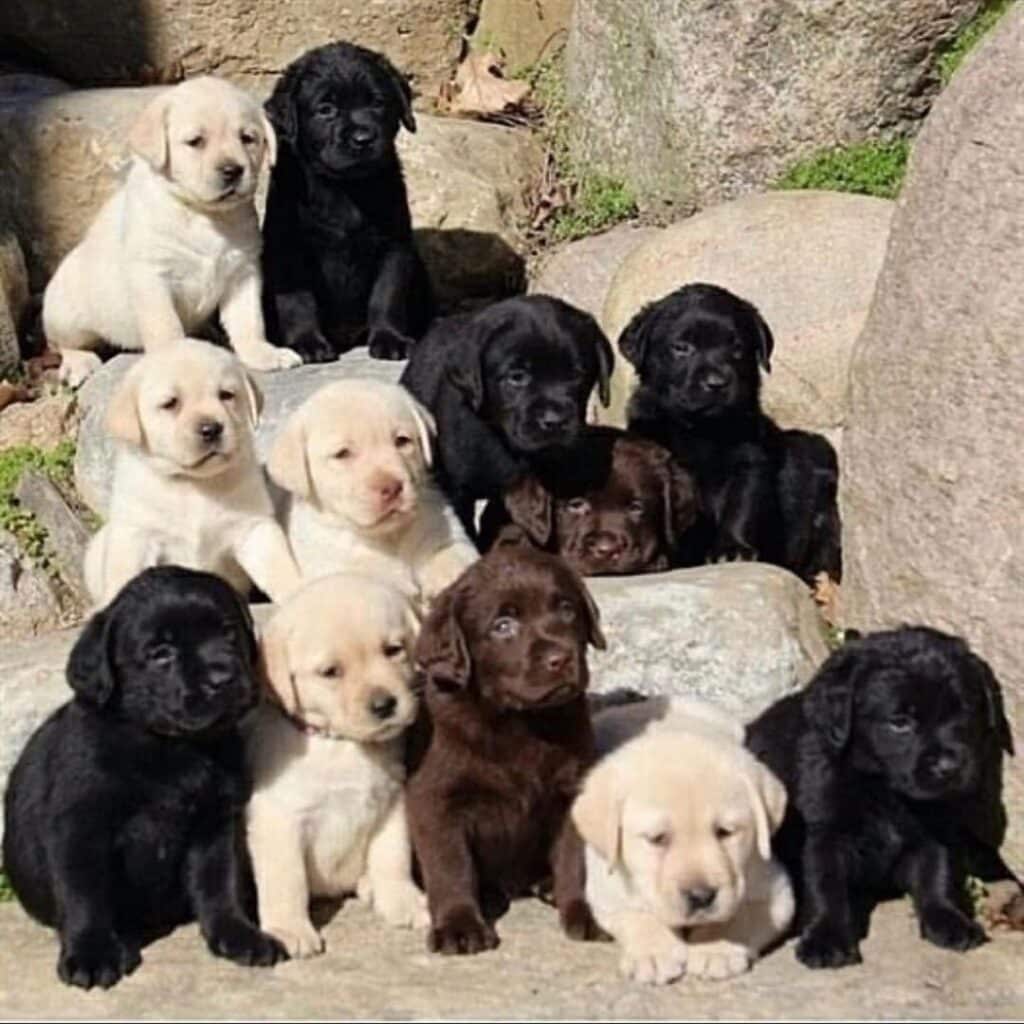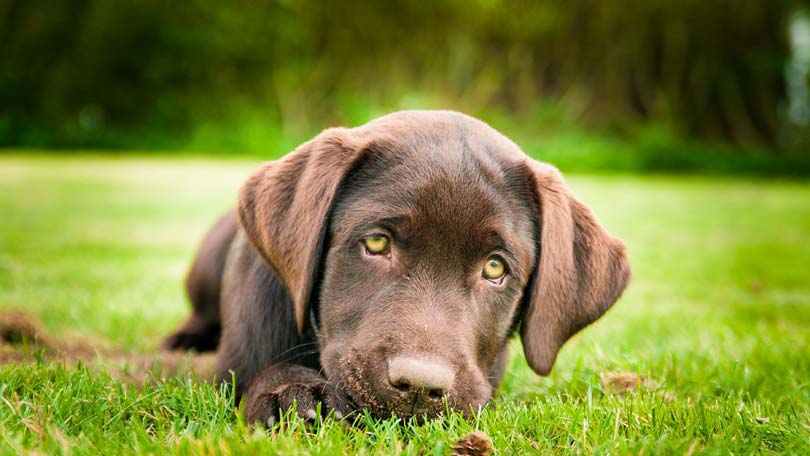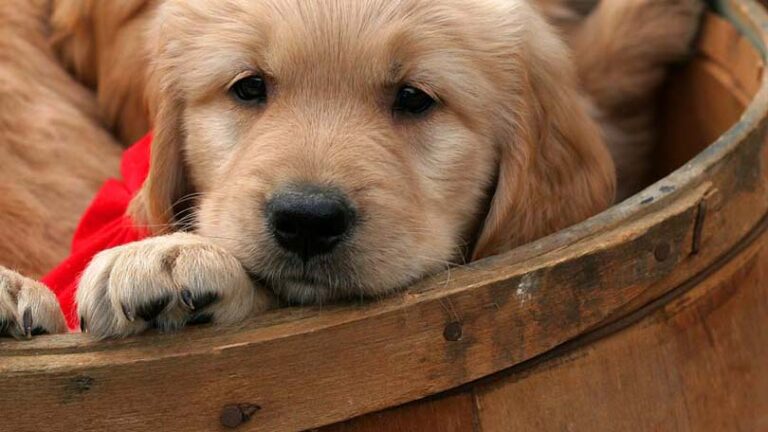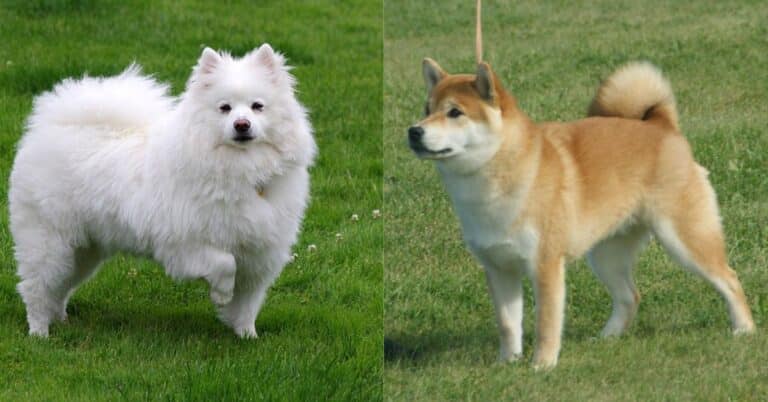Types of Labrador Retrievers – Black, Yellow, and Chocolate Labs
The American Kennel Club and other breed registries generally recognize three colors in Labrador Retrievers: Black, yellow, and chocolate. There is some variation in these colors and their shades, but these are acceptable colors. However, Labs do come in non-approved colors, as well. Here’s some information about these types of Labrador Retrievers.

Approved colors
According to the AKC breed standard, black Labs must be truly black, without and brindle or tan markings. Chocolate Labs can range in shade from light to dark chocolate, but there should not be any brindle or tan markings. Yellow Labs can range from fox-red to light cream in color. There can be variation in the shading on the ears, back, and the underparts of the dog.
The coat itself is short, straight, and very dense. The undercoat is soft and water-resistant. It helps the dog shed water when swimming and dry off quickly by shaking himself. It also protects the dog from heat and cold.
Where the colors came from
The Labrador Retriever is descended from the St. John’s Water dog found in Newfoundland, Canada. These dogs were likely a random mix of breeds brought there by English, Irish, and Portuguese settlers and traders. The dogs were often used by fishermen to help them haul in nets and with other water-related work because they were good swimmers. They were also good at hunting and retrieving waterfowl. By the early 1800s the dogs had caught the attention of English sportsmen and some of them had been taken back to England to be used for hunting and bred there. These dogs and others later would produce the Labrador Retriever. The St. John’s Water Dog was described as being black, often with some white on his paws and chest, chin and muzzle. These markings will still show up on a Lab mixed breed today. The dogs were loyal and smart with a short, smooth coat.
Interestingly, the St. John’s Water Dog is also the ancestor of the Newfoundland, another great water dog. In the case of the Newfy, the St. John’s Dog was probably crossed with Mastiff-type dogs to produce the much larger water dog to help fishermen and be so good at water rescue. The St. John’s Water Dog is the ancestor of many water retrievers, including the Nova Scotia Duck Tolling Retriever.
Once the Labrador Retriever had appeared in England, they became popular with sportsmen, but most of the credit for the breed must go to the Duke of Buccleuch. He and his son continued breeding the dogs for decades. The first yellow Labrador was Ben of Hyde, born in 1899. Liver spotted puppies were born in the Buccleuch kennels in 1892 but the first chocolate Labrador was not born until the 1930s. Yellow and chocolate puppies were often culled at first but they finally gained acceptance.
Yellow Labs were at first a very dark yellow, like butterscotch. The color was called “Golden” but the Kennel Club in Britain refused to use this term. Over the 20th century, lighter shades of yellow were preferred. Fawn shades are seen now, too.
Chocolate Labs may be the result of some early cross-breeding with Flat-Coated and Chesapeake Bay Retrievers in which these genes are found.
The St. John’s Water Dog in Canada survived until the 1980s but they are now extinct.
Silver Labradors
You can also find silver or blue Labradors for sale but there is some dispute about the purebred status of these dogs. The dogs can be registered (usually as chocolate) but they cannot be registered as silver or blue. In England the dogs must be registered as “non-recognized.” In the United States the parent club for the breed has stated: “There is no genetic basis for the silver gene in Labradors.”
Some people suggest that silver and blue Labs seen today are the result of crosses between black Labradors and Weimaraners (which are silver-gray) which may have been done back in the 1920s and ’30s. Whatever the case, the dogs cannot be shown at dog shows. The color is a disqualifying fault in the breed. Many breeders feel that these dogs should not be bred since they do not fit the breed standard.
Silver and blue Labs are only found in North America and nowhere else.
Labradors can sometimes have a white marking on their chest or paws which goes back to the St. John’s Water Dog; and occasionally a Lab will have some brindling or tan points like a Gordon Setter. The white marking is acceptable in the show ring but the brindling is not. None of these colors or markings has any affect on the dog’s temperament or what kind of pet they will be.
If you are interested in a Labrador Retriever, then black, yellow, and chocolate colors are found in the breed. Yellow can range in shade from cream or fawn to fox-red. Chocolate can vary from light to dark. Black should be very black. Brindling (stripes) is unacceptable. A few white marks on the chest or paws are acceptable. But silver and blue Labs are not considered to be acceptable colors and there are serious questions about the purity of these bloodlines.

Having discovered a fondness for insects while pursuing her degree in Biology, Randi Jones was quite bugged to know that people usually dismissed these little creatures as “creepy-crawlies”.







